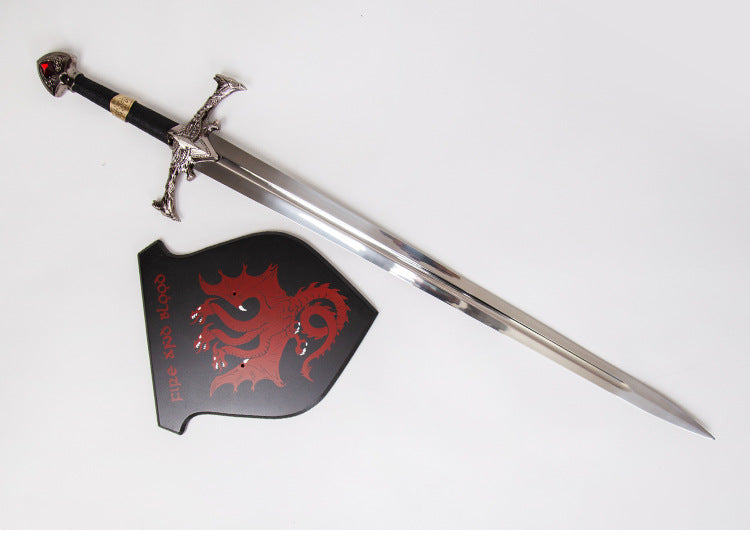
Sword Definition: More Than Just a Weapon
When you hear the word “sword,” what comes to mind? A knight’s gleaming blade on a medieval battlefield? A samurai’s katana symbolizing honor? Or perhaps a fantasy hero’s weapon saving the world? But beyond these vivid images, a proper sword definition requires unpacking its history, design, function, and cultural weight—because a sword is never just “a sharp thing for fighting.”
1. The Etymological Root of “Sword”
Let’s start with the word itself. “Sword” comes from the Old English “sweord,” which traces back to the Proto-Germanic “swerdan.” Linguists link this root to words meaning “to cut” or “to wound,” hinting at the weapon’s core purpose from the start. But even its name tells a small part of the story—language ties the sword to action, not just objecthood.
2. The Physical Definition: What Makes a Sword a Sword?
At its most basic, a sword is a handheld weapon with two key parts:
- Blade: A long, sharpened metal strip (usually steel, though ancient swords used bronze or iron) designed for cutting, thrusting, or both. Unlike a knife (shorter blade) or an axe (heavy, single-edged with a handle perpendicular to the blade), a sword’s blade is typically straight or slightly curved, with a length that’s at least twice the width of its hilt (the part you hold).
- Hilt: The handle assembly, which includes the grip (for holding), the crossguard (a bar that protects the hand from an opponent’s blade), and the pommel (a weight at the end to balance the sword and prevent it from slipping out of the hand).
But here’s the catch: Not all “long sharp blades” qualify. A machete, for example, lacks a crossguard and is built for chopping vegetation, not combat—so it doesn’t fit the traditional sword definition. A sword’s design is always tailored to human movement: balanced for swinging, weighted for precision, and sized to be wielded with one or two hands (think: a one-handed rapier vs. a two-handed longsword).
3. The Functional Definition: Beyond Fighting
For most of history, the sword’s primary job was combat. Ancient Egyptians used short swords to pierce enemy armor; medieval knights relied on longswords to break through chainmail; Japanese samurai used katanas for quick, fatal cuts. But over time, its function expanded—shifting from a tool of war to a symbol of status.
By the Renaissance, swords became part of formal dress for nobles. A gentleman might carry a small sword (a thin, lightweight blade) not to fight, but to show his social rank. In some cultures, swords even played ritual roles: Christian knights were “knighted” with a sword tap on the shoulder, and Hindu weddings once included a sword ceremony to symbolize protection of the family.
4. The Cultural Definition: A Symbol with Meaning
This is where the sword definition gets most interesting. Cultures around the world have turned the sword into a metaphor for ideas far bigger than metal and sharpness:
- In European legends, King Arthur’s Excalibur wasn’t just a sword—it was a symbol of rightful kingship (only the true ruler could pull it from the stone).
- For samurai, the katana was “the soul of the warrior.” Losing it meant losing honor, and caring for it was a sacred duty.
- In Chinese philosophy, the “jian” (a straight, double-edged sword) represented wisdom and justice—scholars and warriors alike revered it as a tool of both defense and virtue.
Today, the sword still holds this symbolic power. In movies like Lord of the Rings (Frodo’s Sting) or Star Wars (lightsabers—yes, even fictional ones follow the sword’s core definition of “a balanced, hand-wielded weapon with purpose”), swords stand for courage, identity, and moral choice.
Wrapping Up: The Full Sword Definition
So, to sum up: A sword is a handheld, balanced weapon with a long sharp blade and a protective hilt, designed for combat or ritual—but its true definition lies in what it represents. It’s a piece of history forged in fire, a reflection of a culture’s values, and a reminder that even objects can carry stories.
The next time you see a sword (in a museum, a movie, or a book), remember: It’s not just metal. It’s a living part of our collective story—one that starts with a simple word, but grows into something far more meaningful.
